CURRENT EVENTS
Competitions, Ceremonies Begin in Paris Olympics
July 25, 2024

The 2024 Olympics run July 26–August 11. The host city is Paris. Most events will take place in an around the French capital city, but some competitors will travel far (and, in some cases, very far) in order to compete. A total of 329 events in 32 sports will be on offer. One new sport is breakdancing, officially listed as breaking. In all 206, national committees have sent delegations of athletes.
COLONIAL AMERICA
Patrick Henry: Voice of Freedom
Patrick Henry was one of the leading lights of the American Revolution, a voice that would not be silenced until Americans were free and could govern themselves.
Samuel Adams: Ringleader of the American Revolution
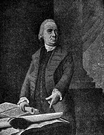 Described as a firebrand, a revolutionary, and a patriot, the young Adams was perhaps the most vocal of his generation to demand independence from Great Britain. He believed in the higher cause of independence, and he didn't often let laws that he thought unjust stand in his way. Described as a firebrand, a revolutionary, and a patriot, the young Adams was perhaps the most vocal of his generation to demand independence from Great Britain. He believed in the higher cause of independence, and he didn't often let laws that he thought unjust stand in his way.
Benjamin Franklin: America's Renaissance Man
Benjamin Franklin was one of the most famous people of his generation, his country, and his country’s history. He was as close as Colonial America came to having a Renaissance man.
John Hancock: The Money Behind the Revolution
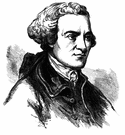 John Hancock is perhaps best known for his very large signature on the Declaration of Independence. However, he was much more important to the American Revolution and the Revolutionary War as a businessman who had large sums of money at his disposal and used that money to support the American cause. John Hancock is perhaps best known for his very large signature on the Declaration of Independence. However, he was much more important to the American Revolution and the Revolutionary War as a businessman who had large sums of money at his disposal and used that money to support the American cause.
The Boston Tea Party
What caused Americans to get so upset about tea? Find out in this easy-to-read article.
|
IN DAYS GONE BY
Machu Picchu
 Machu Picchu, a ruined city once populated by Inca, was built in the 15th Century and remained hidden for half a millennium until a chance encounter brought the ruins back to the light of day. Inca ruled what is now Peru for many years in the Middle Ages. Machu Picchu was built in the early 15th Century, probably about 1450. Spanish conquistadors completed their conquest of the Inca in the late 16th Century. Machu Picchu is thought to have been abandoned in 1572. For the next few hundred years, the stone walls of Machu Picchu sat abandoned and were gradually overgrown. That changed in 1911, when American archaeologist Hiram Bingham announced his discovery. Bingham had been searching for Vilcabamba, the last known Inca refuge from Spanish conquest. On July 24, 1911, Bingham followed the lead of a loyal Peruvian boy, who took him to the ruins not of Vilcabamba but Machu Picchu. Machu Picchu, a ruined city once populated by Inca, was built in the 15th Century and remained hidden for half a millennium until a chance encounter brought the ruins back to the light of day. Inca ruled what is now Peru for many years in the Middle Ages. Machu Picchu was built in the early 15th Century, probably about 1450. Spanish conquistadors completed their conquest of the Inca in the late 16th Century. Machu Picchu is thought to have been abandoned in 1572. For the next few hundred years, the stone walls of Machu Picchu sat abandoned and were gradually overgrown. That changed in 1911, when American archaeologist Hiram Bingham announced his discovery. Bingham had been searching for Vilcabamba, the last known Inca refuge from Spanish conquest. On July 24, 1911, Bingham followed the lead of a loyal Peruvian boy, who took him to the ruins not of Vilcabamba but Machu Picchu.
The First Sino-Japanese War
The First Sino-Japanese War was a late 19th Century struggle largely over control of Korea, won convincingly by Japan. It began on July 25, 1894. The war is known in Japan as the Japan-Qing War, in Korea as the Qing-Japan War, and in China as the War of Jiawu. The empire ruling China in the late 19th Century was the Qing. China had maintained a large military and political presence in Korea for a few hundred years; and for most of that time, China had a strong military and a feared reputation. Two Opium Wars in the early and mid-19th Century, however, weakened Chinese military forces and influence. At the same time, Japan, in 1854, had agreed to open its border and trade with the United States and then, after the Meiji Restoration, embarked on a period of industrialization that produced growth and modernization across all aspects of the country, including its military might.
|
ECONOMICS
(For a description of these fun, illustrated,
easy-to-read articles, click here.)
Making
a Budget
One
thing that every good
money manager does is make a budget. Find out why and
how.
Why
All the Graphics in
Economics?
 Economics needs so many graphs because it tracks trends and
other numerical information that other subjects in the
social studies don't, at least not nearly as often. Take the
mystery and difficulty out of charts, tables, and graphs!
Economics needs so many graphs because it tracks trends and
other numerical information that other subjects in the
social studies don't, at least not nearly as often. Take the
mystery and difficulty out of charts, tables, and graphs!
The
Importance of Trade
Trade is vital to the success of a civilization. Why? The
civilization that can produce just enough of everything it
and its people need to survive is rare indeed. Can you think
of an example, today or in the long history of people? Keep
thinking ...
|
GEOGRAPHY
Basic
Geography: The Equator and the Prime
Meridian
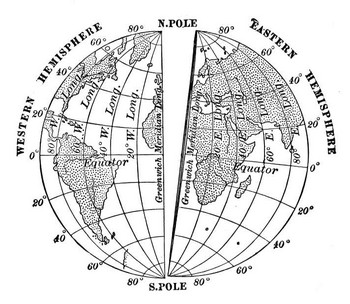 The
earth is a globe, of
course, and can be divided into lots of lines called
latitude and longitude. Latitude
lines run north and south; longitude lines run east and
west. The lines measure distances in degrees. But where do you start? Where
is 0 degrees? This
illustrated article answers those questions and more in a
fun, easy-to-read way.
The
earth is a globe, of
course, and can be divided into lots of lines called
latitude and longitude. Latitude
lines run north and south; longitude lines run east and
west. The lines measure distances in degrees. But where do you start? Where
is 0 degrees? This
illustrated article answers those questions and more in a
fun, easy-to-read way.
Latitude
and Longitude
Latitude and Longitude help us identify the location of
places on a globe. These links give you a better
understanding of these important concepts.
Unforgiving Places
Deserts, mountains, wastelands—these are some of the planet's Unforgiving Places. Learn more about these lonely yet intriguing destinations.
|
INTERNATIONAL ORGANIZATIONS
The European Union
The European Union is an international economic and political organization comprising most of the countries of Europe. It dates to 1992 but had its origins in the wake of World War II. The European Coal and Steel Community (ECSC) began as an attempt to forestall yet another military conflict between France and Germany. French Foreign Minister Robert Schuman proposed a common market for coal and steel, an agreement that would unite those two countries (West Germany, since the post-World War II division) in an economic and political association aimed at cooperation and common benefit. It wasn't just France or West Germany onboard; also joining were Belgium, Italy, Luxembourg, and the Netherlands. (All but Italy were already engaged in negotiations that would eventually create the Benelux Union.) The parliaments of all six nations voted in favor of creating and joining the ECSC and so it came into being, signed on April 18, 1951 and beginning operation on July 23, 1952. Eventually, 40 years later, the EU emerged.
The African Union
 The African Union is a 55-member body that looks to address issues common to all African nations. Member states founded the African Union (AU) on May 26, 2001, in Addis Ababa, Ethiopia, and its operations began the following year, on July 9, 2002, in Durban, South Africa. Egyptian President Hosni Mubarak was the first head of the African Union. The Ethiopian capital is the political center of the AU. Most of the body's important decisions are made as a result of a semi-annual meeting of the heads of state called the Assembly of the African Union, which meets once a year. A head of state from of the member states serves as the Chairperson of the AU for a year. The chairperson represents the AU at international meetings, including the G-8 and the G-20. The post rotates among the continent's five geographic regions: Central, Eastern, Northern, Southern, and Western.
The African Union is a 55-member body that looks to address issues common to all African nations. Member states founded the African Union (AU) on May 26, 2001, in Addis Ababa, Ethiopia, and its operations began the following year, on July 9, 2002, in Durban, South Africa. Egyptian President Hosni Mubarak was the first head of the African Union. The Ethiopian capital is the political center of the AU. Most of the body's important decisions are made as a result of a semi-annual meeting of the heads of state called the Assembly of the African Union, which meets once a year. A head of state from of the member states serves as the Chairperson of the AU for a year. The chairperson represents the AU at international meetings, including the G-8 and the G-20. The post rotates among the continent's five geographic regions: Central, Eastern, Northern, Southern, and Western.
The Gulf Cooperation Council
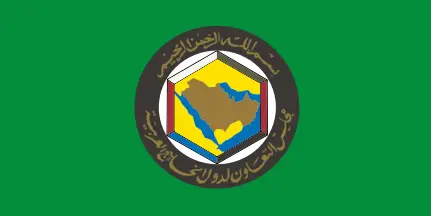 The Gulf Cooperation Council (GCC) is a political organization that works to serve the collective interests of its six members: Bahrain, Kuwait, Oman, Qatar, Saudi Arabia, and the United Arab Emirates (UAE). The member nations founded the GCC in 1981, as a way to foster cooperation in economic, scientific, environmental, and social issues. The GCC has several political bodies. The Supreme Council is the highest decision-making body; the Council meets annually, and each member nation has one representative who has one vote. Presidency of the Council rotates annually. Substantive decisions of the Supreme Council must be unanimous; procedural matters can be approved by a majority. Foreign ministers make up the Ministerial Council, which meets every three months, and make policies and recommendations to the Ministerial Council. The GCC's executive branch, the Secretariat General, implements decisions made by the two Councils. The head of this apparatus is the Secretary-General, who serves a three-year term. Member nations have pursued collective economic efforts in recent years, forming a common market in 2008 and a monetary council the following year and then a customs union in 2015. A move to incorporate a common currency is ongoing.
The Gulf Cooperation Council (GCC) is a political organization that works to serve the collective interests of its six members: Bahrain, Kuwait, Oman, Qatar, Saudi Arabia, and the United Arab Emirates (UAE). The member nations founded the GCC in 1981, as a way to foster cooperation in economic, scientific, environmental, and social issues. The GCC has several political bodies. The Supreme Council is the highest decision-making body; the Council meets annually, and each member nation has one representative who has one vote. Presidency of the Council rotates annually. Substantive decisions of the Supreme Council must be unanimous; procedural matters can be approved by a majority. Foreign ministers make up the Ministerial Council, which meets every three months, and make policies and recommendations to the Ministerial Council. The GCC's executive branch, the Secretariat General, implements decisions made by the two Councils. The head of this apparatus is the Secretary-General, who serves a three-year term. Member nations have pursued collective economic efforts in recent years, forming a common market in 2008 and a monetary council the following year and then a customs union in 2015. A move to incorporate a common currency is ongoing.
THE HISTORY AND POLITICAL DEVELOPMENT OF AUSTRIA
The Development of Austria Before Habsburg Rule
Like many other areas of Europe, what is now Austria has a past that includes Celtic and Roman influences. Other pre-Habsburg rulers included the Holy Roman Empire and a handful of Babenbergs.
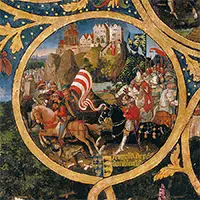
Leopold the
Illustrious |
|
Leopold I: Margrave of Austria
Leopold the Illustrious (left) was the first Margrave of Austria and the progenitor of the Babenberg dynasty that ruled over Austria for many decades.
Henry I: Margrave of Austria
Henry I was the second Margrave of Austria. He ruled in the last part of the 10th Century and into the early 11th Century.
Adalbert: Margrave of Austria
Adalbert followed in his father's and brother's footsteps by extending the borders of the realm.
Ernest: Margrave of Austria
Ernest was the fourth Margrave of Austria. He ruled for two decades in the 11th Century and both fought against and lent support to the Holy Roman Empire.
Leopold II: Margrave of Austria
Leopold II was the fifth Margrave of Austria. He ruled for two decades in the late 11th Century and continued his father's struggle against the Holy Roman Empire.
Leopold III: Margrave of Austria
Leopold III was the sixth Margrave of Austria. He ruled for more than four decades in the late 11th Century and early 12th Century. He is also known for establishing a number of monasteries.
Leopold IV: Margrave of Austria
Leopold III was the seventh Margrave of Austria. He ruled for just a few years and had a relatively peaceful reign.
Henry II: Margrave of Austria, Duke of Austria
Henry II was the eighth and last Margrave of Austria and the first Duke of Austria. He ruled in that capacity for 15 years and then served as Duke of Austria for 21 years after that. He also fought in the Second Crusade.
Leopold V: Duke of Austria
Leopold V was the second Duke of Austria. He reigned for nearly two decades near the end of the 12th Century. He also fought in the Third Crusade and later kidnapped England's King Richard I, an act that shaped the histories of England and France for generation.
Frederick I: Duke of Austria
Frederick I was the third Duke of Austria, ruling for three short years at the end of the 12th Century. He died on Crusade, in the Holy Land.
Leopold VI: Duke of Austria
Leopold VI was the fourth Duke of Austria, ruling for more than three decades at the beginning of the 13th Century. He fought in the Fifth Crusade
Frederick II: Duke of Austria
Frederick II was the fifth and last pre-Habsburg Duke of Austria, ruling for more than three decades in the first half of the 13th Century. One of his signal achievements was a victory over the feared Mongols.
The Babenberg Succession Conflict
In the ruling history of Austria, the bridge between the House of Babenberg and the House of Habsburg was a succession controversy.
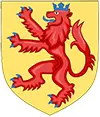
Rudolf I
The King of Germany won a power struggle and then initiated Habsburg rule of Austria, cementing immediate succession by installing his sons as leaders of the largest provinces.
Albert I
Albert I was King of Germany and ruler of Austria for a decade on either side of the turn of the 14th Century. His reign came to a violent end.
Rudolf II
Rudolf II was King of Germany and Holy Roman Emperor for a time in the late 16th Century and early 17th Century. He was born in Vienna and ruled Austria as well but only for a short time.
Frederick III: Duke of Austria
Frederick III was Duke of Austria and Styria for more than two decades in the 14th Century, sharing power with two of his brothers. He won selection as Holy Roman Emperor for a time but then lost it again, retiring to rule Austria in peace.
Albert II: Duke of Austria
Albert II was Duke of Austria and Styria for more than two decades in the 14th Century, sharing power with his brother Otto. With his mind on succession, Albert established the Albertinian House Rule, stipulating that the principle of primogeniture (the right of the firstborn child–and, ideally, son–to inherit his father's main estate, lands, and titles) should apply.
Rudolf IV: Duke of Austria
Rudolf IV was Duke of Austria and Styria for seven years in the mid-14th Century. Denied a role as an elector for choosing the Holy Roman Emperor, Rudolf issued the Privilegium maius, a series of "found" documents that elevated Austria to the status of an archduchy and, in the duke's minds, deserving of elector status.
Albert III: Duke of Austria
Albert III was Duke of Austria for three decades in the 14th Century, sharing power with his brother Leopold.
Albert IV: Duke of Austria
Albert IV was Duke of Austria for nine years on either side of the start of the 15th Century.
Albert V: Duke of Austria
Albert the Magnanimous was one of his handful of titles. He was also King of Germany and Holy Roman Emperor. Among his prime achievements were the ending of private warfare and feuds and the division of Germany into administrative circles, from which his successors benefited much more than he did.
Ladislaus: Duke of Austria
Ladislaus was Duke of Austria and King of Bohemia, Croatia, and Hungary for many years in the 15th Century. He was the last Duke of Austria.
Austria was ruled for an extended period of time, and at various intervals, by a series of Holy Roman Emperors.
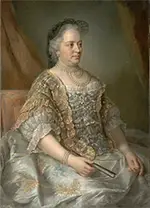
Maria Theresa: Empress of Austria
Maria Theresa (left) was Holy Roman Empress for four decades in the 18th Century, surviving a devastating war over her succession and ruling over a period of great reform.
Joseph II: Ruler of Austria
The second husband of Maria Theresa, he was Holy Roman Emperor in his own right after she died, becoming a proponent of enlightened absolutism.
Leopold II: Ruler of Austria
Succeeded his brother on the thrones of Austria and the Holy Roman Empire. His desire to reverse the enlightened policies of his predecessor led to deep discontent in the country and resulted in the enmity of revolutionary France.
Francis II: Ruler of Austria
Son of Leopold II, he was the last Holy Roman Emperor and the last Archduke of Austria. He took command of troops fighting in the coalition wars against France. In the middle of it all, he declared himself the first Emperor of Austria. His most famous advisor was Klemens von Metternich.
Ferdinand I: Emperor of Austria
Ferdinand I was Emperor of Austria for more than a dozen years in the 19th Century, giving way in the wake of the revolutionary fervor that swept many European countries in the middle of the century.
Franz Josef: Emperor of Austria
Franz Josef was Austrian emperor from 1848 to 1916. During that time, he presided over a large number of changes in his homeland, including the advent of the Austro-Hungarian Empire and the devastation of World War I.
The Austro-Hungarian Empire
The Austro-Hungarian Empire was in existence for just more than 50 years.
Karl: Emperor of Austria-Hungary
Karl I was the last emperor of Austria-Hungary. He reigned for nearly two years, in the waning days of World War I.
|
|
Search This Site
Get weekly newsletter
|
DID YOU KNOW?
It took a century ... 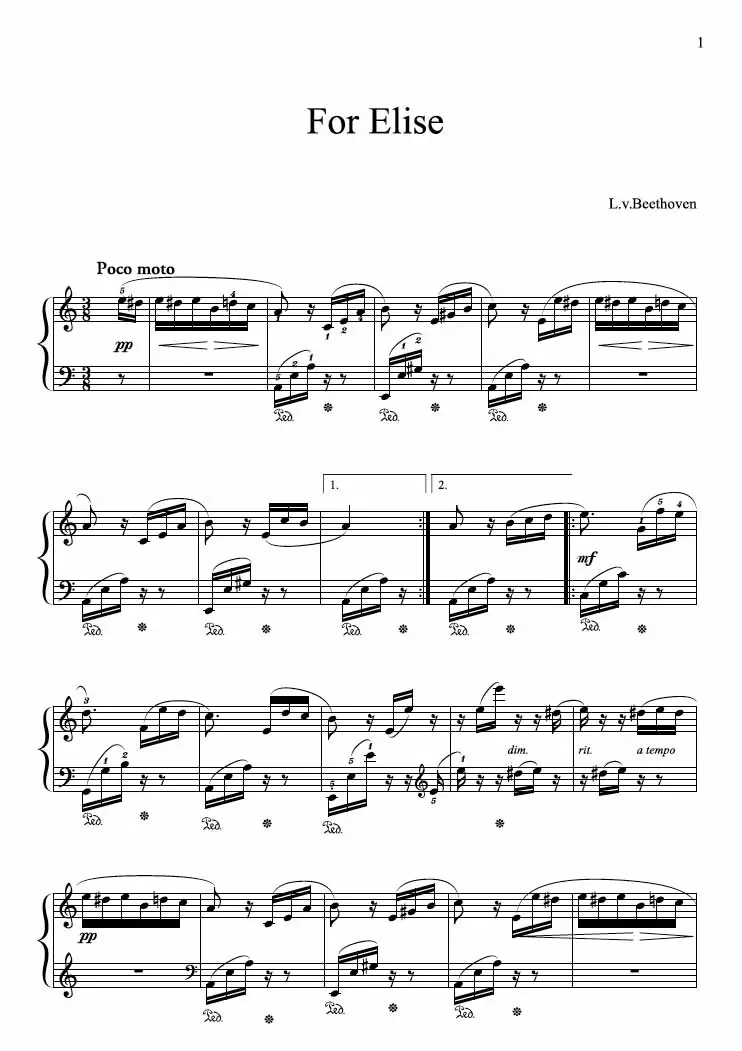
Ludwig van Beethoven's iconic piano composition Fur Elise wasn't published for more than a century after he wrote it.
Find out why.
Actress and inventor
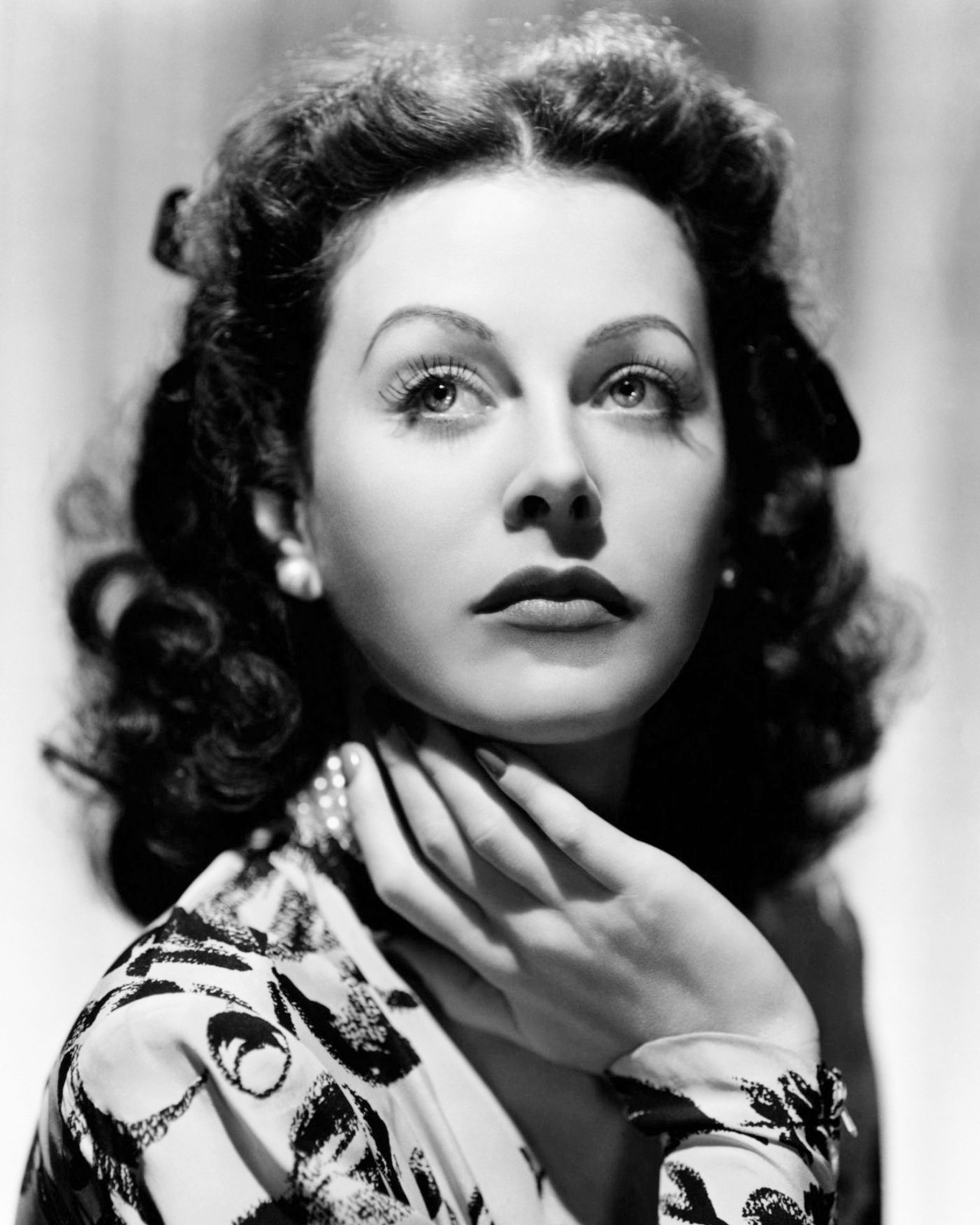 Actress Hedy Lamarr was one of the most famous actresses of her generation, starring opposite such famous leading men as Clark Gable, John Garfield, Spencer Tracy, and Robert Young. She was also a scientist and inventor. One of her inventions forms the basis of much of today's wireless technology.
Find out more.
Who drives on which
side of the road
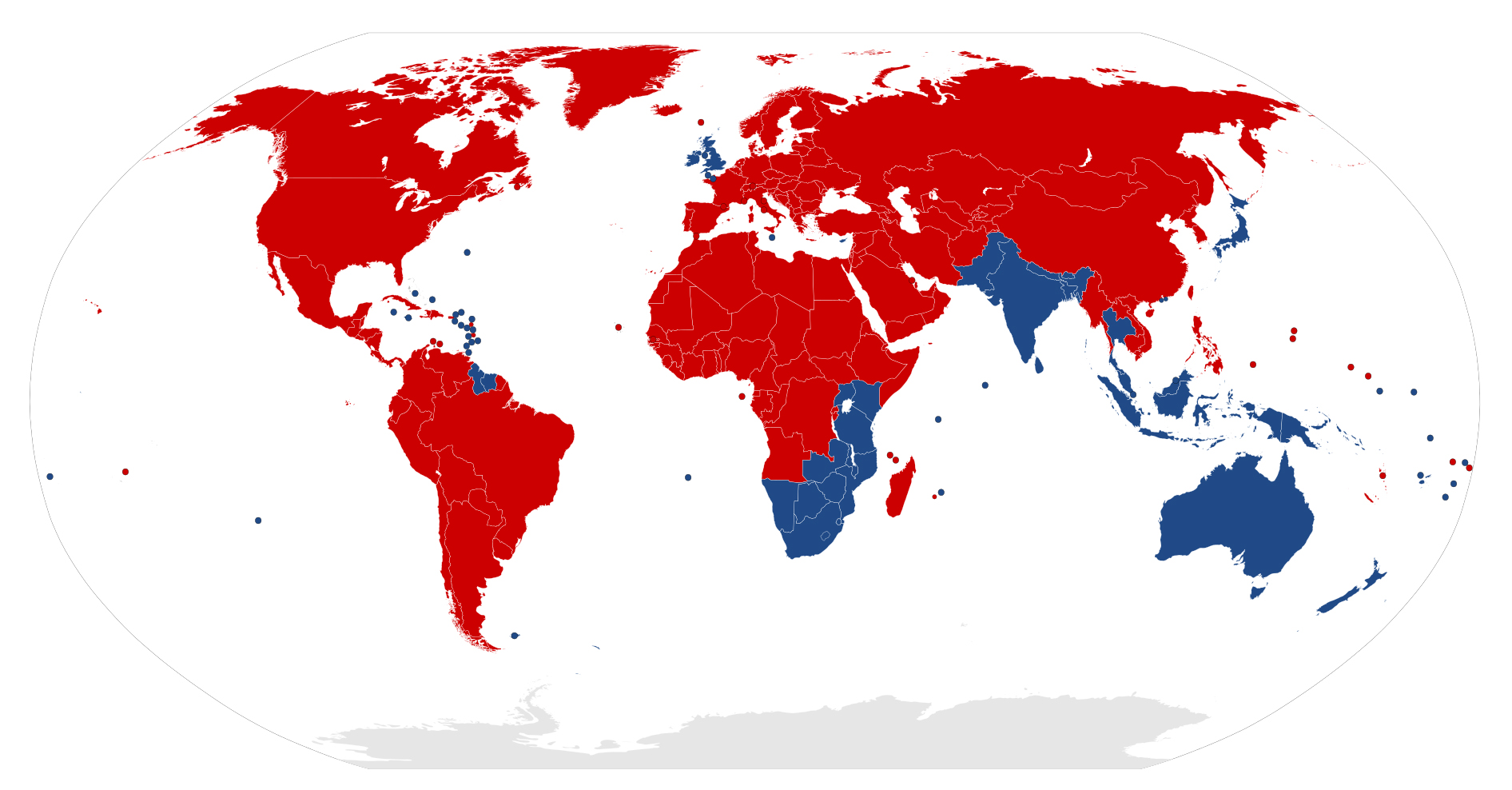
Several dozen of the world's countries and territories stipulate that drivers must adhere to the left side of the road; the rest of the world, about two-thirds of the population, drives on the right. Ever wonder why some countries have drivers go on the left?
Find out here.
Canals once powered commerce

Before the advent of the railroad, many American goods and people traveled by river, along a network of canals. An entire industry grew up around the shipping of goods by canal. Ship captains made their living shipping goods back and forth between cities and ports. In between journeys, captains and boat workers lived in communities along canals.
Find out more.
The sounds of places
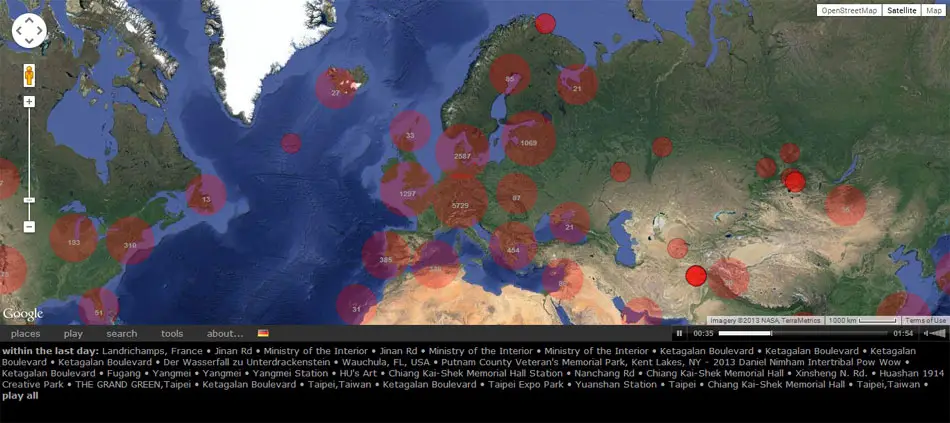
Melding social media with geography is Udo Noll, whose online sound archive Radio Aporee: Maps boasts nearly 20,000 recordings tied to specific places. Noll, a German media artist and applied scientist, created the website in 2006, as a repository for place-specific sounds in urban, rural, and natural environments. In the years since its creation, the site has become home to thousands of homemade recordings of people speaking, animals making their own noises, and nature being nature.
Find out more.
The 1st licensed female pilot

Baroness la Deroche was the first woman to earn a pilot's license. She did so in 1910. The Frenchwoman flew planes in airshows in several countries, including Egypt, France, Hungary, and Russia.
Find out more.
Demand for tulips once
ruined many fortunes
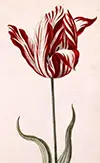
The Dutch Tulip Bubble was an economic episode that bankrupted many individuals and cost many others their credibility but left the government and its treasury and reputation largely unscathed. Many people also refer to this episode as Tulip Mania.
Find out more.
Why Is It Called a River Delta?
As with many things, the answer lies in Ancient Greece.
Why Is It That American Elections Are on Tuesday?
Elections in American happen on a Tuesday. That's the law. But why?
Why Is It Called Big Ben?
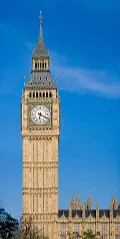
Big Ben is actually the giant bell inside the famous Clock Tower in London. It is not the only bell in the tower, and it is certainly not the tower itself. The giant bell, the official name of which is the Great Bell, is more than 7 feet tall and more than 9 feet wide and weighs 13.5 tons. It sounds an E-natural note. As to why any of it is called Big Ben, that's a matter of some debate.

Significant Sevens are the highest, the lowest, the deepest, the farthest, the oldest, the youngest, and a host of other lists in economics, geography, history, and much more.
The Seven Most Visited National Parks in the U.S.
The Seven Longest Train Journeys in the World
Cultural Icons are the instantly recognizable monuments, landforms, buildings, and many other kinds of landmarks that define a people, place, or culture.
Angkor Wat
The Angkor Wat complex, the world's largest religious monument, has as its main features a 213-foot-tall central tower and four surrounding smaller towers, enclosed by a number of walls and a surrounding moat.
The
Brooklyn Bridge
The Brooklyn Bridge, still one of the world's longest suspension bridges, opened to the public on May 24, 1883.
The Eiffel Tower
The Eiffel Tower was once criticized for its design. It is now, and has been for some time, one of the most recognized and visited structures in the world.
Versailles
The opulent palace and grounds were the seat of government and playground of French monarchs for many years. Now, annual visitors top 3 million.
|
|
|